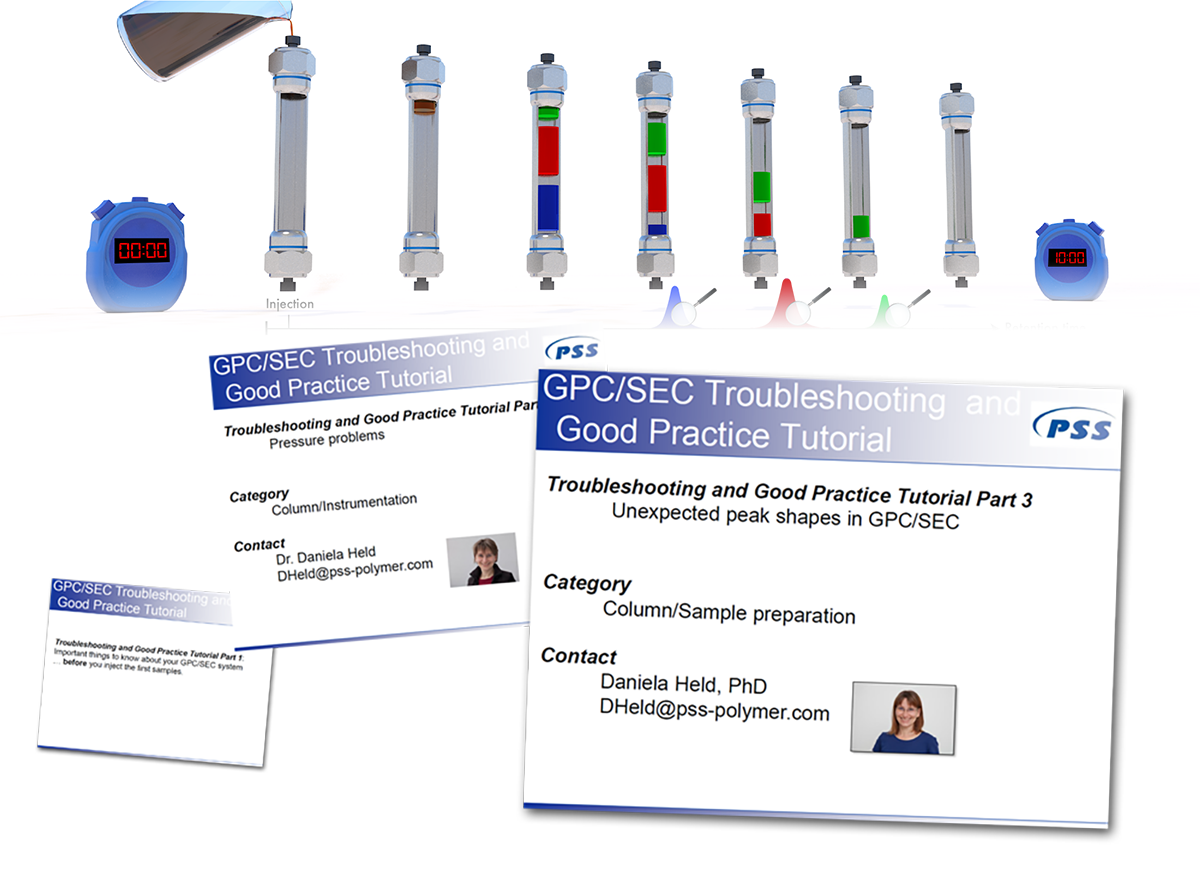Separation Science, in collaboration with PSS, offers a video tutorial series providing best practice and troubleshooting solutions for gel permeation chromatography / size exclusion chromatography to improve your laboratory’s separation methods. The series currently comprises seven parts, all available to view free of charge.

In this learning series you'll be provided with solutions for various aspects of the GPC/SEC methodological process, increasing your fundamental knowledge and practical skills in these key analytical techniques.
Tutorials are listed below, together with a basic outline:
- Tutorial #1: What Should You Know Before Injecting Your First Sample
In this tutorial you are introduced to typical components in GPC/SEC and will discover what you need to know about your GPC/SEC system. You will also learn what plate count means and you how can you determine it. - Tutorial #2: Pressure Problems
In this tutorial you'll discover what strategies can be implemented to overcome pressure problems in your liquid chromatography system - Tutorial #3: Unexpected Peak Shapes
Do you find weird peak shapes in your chromatograms? Not sure if they are real or artifacts? In this tutorial we'll discuss peak shapes and learn how to verify if a GPC / SEC chromatogram is realistic or not. - Tutorial #4: Choosing the Column
I have completely new samples and need to identify the best columns to analyze them - what are the correct column selection criteria for my analyses? - Tutorial #5: Sample Preparation in GPC/SEC
In this tutorial you'll learn how to avoid the typical mistakes made when preparing solutions of sample and calibration standards? - Tutorial #6: Calibration in GPC/SEC
This presentation will help you to understand the requirements and procedures for calibrations using reference materials with narrow molar mass distributions, and to get some inspiration on various calibration options. - Tutorial #7: How to Achieve Reproducible Data
This tutorial will help you understand the influence of evaluation parameters on results and provide advice on how to improve your own operations.
 Dr Daniela Held studied chemistry at the University of Mainz. Her PhD work was on the characterization of star-branched polymers using GPC/SEC and hyphenated techniques. She joined PSS in 2000 and is responsible for customer training and support.
Dr Daniela Held studied chemistry at the University of Mainz. Her PhD work was on the characterization of star-branched polymers using GPC/SEC and hyphenated techniques. She joined PSS in 2000 and is responsible for customer training and support.




